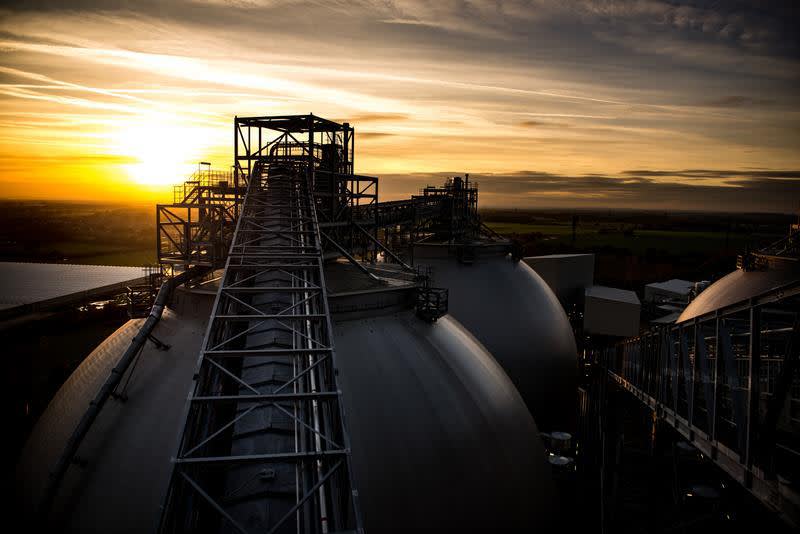BECCS, negative emissions and the net zero business future
Countries and organisations around the world are racing towards net zero emissions targets. Major companies, including Microsoft, Google, Siemens and Unilever have pledged to balance their emissions to net zero before 2050.
For some industries, such as aviation, shipping, and cement manufacturing, the use of fossil fuels is unavoidable, at least in the short-to-medium term. This means that for companies or countries to reach net zero, there is a need not just to reduce greenhouse gas (GHG) emissions, such as carbon dioxide (CO2), but to actively remove them from the atmosphere.

Achieving carbon removal at the scale needed to meet companies' climate targets and the Paris Agreement will require a range of nature-based, engineered, and hybrid solutions. Bioenergy with carbon capture and storage (BECCS) is a hybrid technology that utilises nature-based and technological solutions to remove CO2 from the atmosphere and provide a source of renewable electricity.
What is BECCS?
The BECCS process generates energy using sustainably sourced biomass from forests, which absorb CO2 over their lifecycle. When wood from forests is used in industries like construction and paper, residues and waste wood can also be used to make biomass pellets, which can then be combusted to generate renewable electricity.
The CO2 absorbed by the biomass that is released in the combustion process is captured and then permanently and safely stored in locations such as deep geological formations.
Throughout the process, CO2 is permanently removed from the atmosphere, delivering negative emissions.

Negative emissions on the path to net zero
The Intergovernmental Panel on Climate Change (IPCC) modelling shows that between 0.375Gt and 9.5Gt of CDRs, via BECCS, could be required on average each year between 2020 and 2100 to reach global decarbonisation targets.
The Climate Change Committee has highlighted the importance of BECCS as a route to net zero. It forecasts that by 2050, between 43 and 96 million tonnes of CO2 per year could be sequestered through BECCS in UK power generation and other industries where it can replace fossil fuels.
However, for BECCS to develop to such a scale requires the right economic models to fund the installation and operations of carbon capture, transport and storage systems.

The advantages of BECCS
BECCS is a high-quality form of carbon removal
It may be difficult to assess the quality of carbon projects from which credits are traded on the voluntary markets. Guaranteeing the amount of carbon absorbed by some nature-based solutions, for example, can be difficult.
BECCS is different from carbon credits that may only reduce CO2 emissions, in that it removes emissions from the atmosphere. It’s also a permanent way to remove emissions from the atmosphere and sequester it geologically. This capability contrasts with other approaches, which are relatively short-term in the time frame.
BECCS delivers renewable energy and negative emissions
The IPCC claims that by 2050, as much as 85% of global power could come from intermittent renewables like wind and solar, according to a 2018 report. The other 15% will, therefore, need to come from non-intermittent sources, such as sustainable biomass, which is not subject to the weather.
The IPCCs 2022 report also states bioenergy is “important” in fighting climate change. It states that carbon dioxide removal technologies, such as BECCS, are “unavoidable if net zero CO2 or GHG emissions are to be achieved.
Adding carbon capture and storage to bioenergy both removes carbon from the atmosphere and provides a source of reliable, renewable electricity.
BECCS is proven, ready to scale up and will bring down the costs of net zero
BECCS is already under development at power stations and utility sites worldwide. The technology has been piloted and proven at Drax Power Station in South Yorkshire, where the first unit is targeted to be online in 2030 . Each unit converted will remove 4mt/yr CO2 from the atmosphere, and the site has the potential to become the largest permanent CO2 removal project in the world. Long-term government planning is needed to create a market structure that will enable the project to be developed and remove significant volumes of CO2 from the atmosphere.
2024 analysis by Baringa and commissioned by Drax Group – The Value of BECCS at Drax Power Station – found that Drax’s proposals for BECCS could save the UK up to £15bn in whole economy costs between 2030 and 2050. This saving is equivalent to around £700m per annum, or £25 per household per year, and could help provide a more efficient pathway to meeting the UK’s Net Zero targets.
BECCS is also a more cost-effective option than nascent technologies such as direct air capture and storage (DACS), which is energy-intensive and requires large areas of land to deploy at scale.
The cost of not deploying BECCS
Emissions-intensive industries employ hundreds of thousands of people around the UK. If these sectors, such as steel making and chemicals, are unable to offset their emissions, those jobs will be at risk.
In the Humber region decarbonisation is essential to protecting as many as 55,000 people employed in emissions-intensive industries. But more than just protecting jobs, BECCS at Drax has the potential to support thousands of jobs directly and through the supply chain during the construction period while safeguarding existing jobs on site. Innovations like BECCS provide some hope and a tangible way forward for sectors and businesses that will find it difficult to get to zero carbon. Offsetting isn't the go-to answer if you're able to cut carbon. But where it's incredibly difficult to truly stop all carbon, negative emissions tech goes a step beyond basic offsetting.

